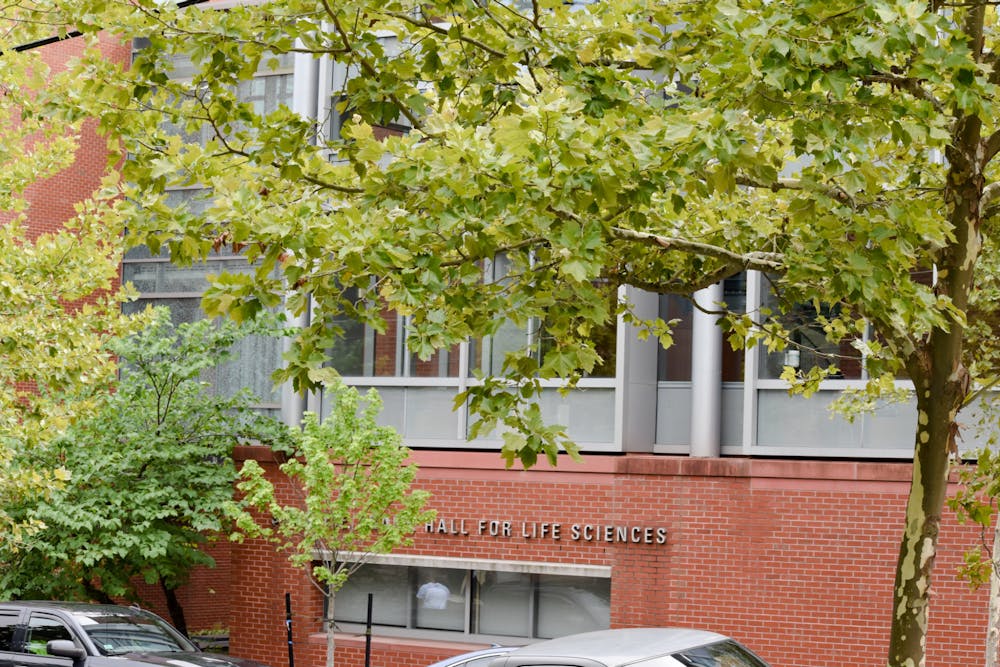The University has begun planning to build a new integrated life sciences building in Providence’s Jewelry District as it runs out of space for research in its current facilities, according to Dean of Medicine and Biological Sciences Mukesh Jain.
“In May, the Brown Corporation authorized the University to begin the process of selecting an architect (for the new life sciences building), and that process is now underway,” University Spokesperson Brian Clark wrote in an email to The Herald. The University hopes to share news about the selection of an architect within the next few months, he added.
The University will launch an extensive programming phase to assess factors such as space needs, design, projected scale and estimated costs, Clark wrote. The first steps will likely take four or five years, he added.
The University is currently looking for design teams that have previously developed academic research facilities and also have a commitment to sustainable design practices, Clark wrote.
Currently, the University has three biomedical facilities, two on campus — the Biomedical Center and Sidney Frank Hall for Life Sciences — and one off campus — the Laboratories for Molecular Medicine at 70 Ship St., Jain wrote in an email to The Herald.
“The BioMed Center opened in 1969, so it’s the oldest and most dated of our facilities, and it’s completely maxed out. Sidney Frank and the Laboratories for Molecular Medicine opened in the mid-2000s, and both are nearing capacity,” Jain wrote. “Right now, we are essentially out of space for research, not just in BioMed.”
Not only are the existing research facilities nearing maximum capacity, some need significant investments for renovation and maintenance, Clark wrote.
Research in the life sciences at Brown includes “20 biology and clinical departments … and four departments at the School of Public Health,” Clark wrote. The programming phase of the building process will assess the needs of each research program and determine what specific spaces would be included. Creating an integrated life-sciences building is instrumental in supporting Brown’s research aspirations, Clark added.
Even as the University runs out of space, research in the life sciences continues to grow as does the potential of Brown researchers to make significant impacts on the treatment of life-threatening diseases, according to Jain. The newly-planned facility will make it possible for University researchers to access more resources and recruit more world-class scientists and scholars, Jain wrote.
While the new building is not yet an active construction project, investigators are already looking forward to the new space’s impact on the research community at Brown.
Assistant Professor of Molecular Biology, Cell Biology and Biochemistry Alvin Huang, who is currently working from the Laboratories for Molecular Medicine, is excited about the opportunities a new building will bring.
The new research building will “greatly benefit the Brown research community,” Huang said. While the new hardware, equipment and facilities will help with space issues, the building will also greatly help to facilitate collaboration among researchers, Huang added. “This building will bring together labs from different departments and disciplines who wouldn’t previously have met together in person,” Huang said.
Huang hopes that being physically connected to researchers and resources will foster new collaboration opportunities and teamwork.
“Having the capacity to do truly cutting-edge research will result in potential drugs, devices and diagnostics that can be applied to patient care — this is what we call translational research. We’ll be able to build stronger ties to biotech and pharma companies, and also spin-off companies built on Brown discoveries,” said Jain.

Jared is a Senior Staff Writer for Science and Research. He is a senior from Albuquerque, New Mexico studying physiology and biotechnology. Outside of The Herald he likes to fish, ride bikes and research the role of metals in human health and disease.





